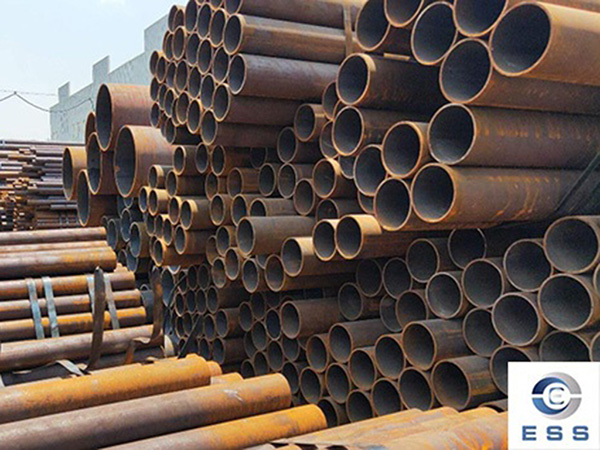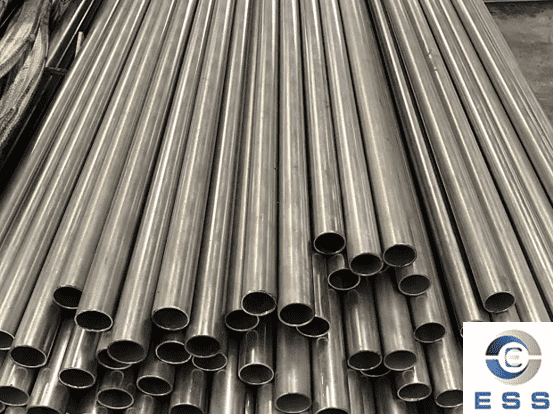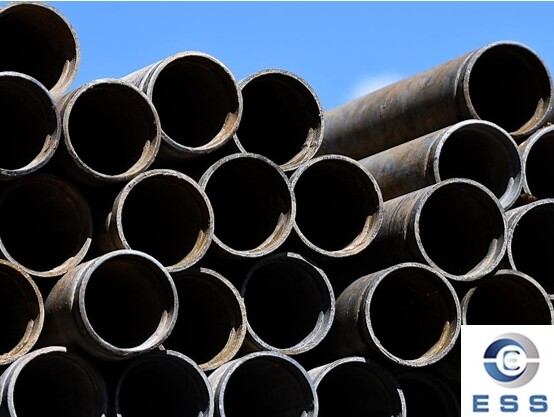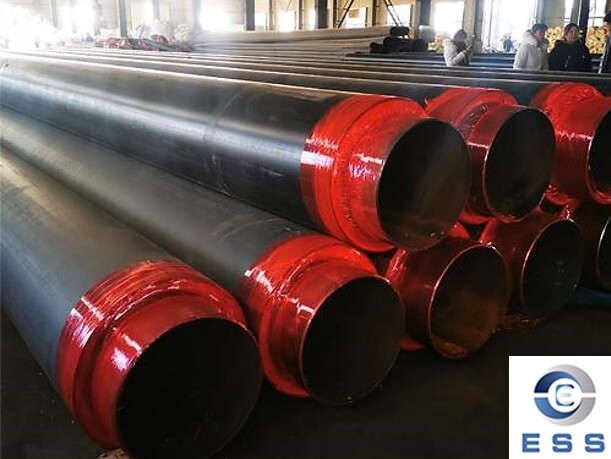Repairing Seamless Carbon Steel Pipe
Seamless carbon steel pipes are widely used in various industries due to their excellent mechanical properties and high durability. However, like any other material,
seamless steel pipes are prone to damage and wear over time. This may be caused by various factors, such as corrosion, abrasion, and thermal stress. Fortunately, there are several methods of repairing seamless carbon steel pipes that can restore their structural integrity and extend their service life. In this article, we will discuss the most common techniques of repairing seamless carbon steel pipes and their advantages and disadvantages.

seamless carbon steel pipe
1.Welding
Welding is one of the oldest and most widely used methods of repairing seamless carbon steel pipes. It involves joining two or more pieces of metal together by melting them with heat and then allowing them to cool and solidify, forming a strong bond. Welding is particularly effective in repairing cracks, holes, and other types of damage in seamless carbon steel pipes. However, it requires a high level of skill and expertise, as well as specialized equipment and safety measures.
There are several types of welding that can be used to repair seamless carbon steel pipes, including:
1.1. Shielded metal arc welding (SMAW)
SMAW, also known as stick welding, is a manual welding process that uses a consumable electrode coated in flux to create an arc between the electrode and the metal being welded. The flux creates a shield around the weld, protecting it from atmospheric contamination and oxidation. SMAW is a versatile and cost-effective method of repairing seamless carbon steel pipes, but it is slow and can produce a rough and uneven weld.
1.2. Gas tungsten arc welding (GTAW)
GTAW, also known as TIG welding, is a precision welding process that uses a non-consumable tungsten electrode to create an arc between the electrode and the metal being welded. A shielding gas, such as argon, is used to protect the weld from atmospheric contamination and oxidation. GTAW produces a high-quality, precise, and aesthetically pleasing weld, but it is slower and more expensive than other welding methods.
1.3. Gas metal arc welding (GMAW)
GMAW, also known as MIG welding, is a semi-automatic welding process that uses a consumable wire electrode and a shielding gas to create an arc between the electrode and the metal being welded. GMAW is a fast and cost-effective method of repairing seamless carbon steel pipes, but it requires a high level of skill to produce a high-quality weld.
2.Pipe lining
Pipe lining is a method of repairing seamless carbon steel pipes by inserting a new liner inside the existing pipe. The liner can be made of various materials, such as epoxy, polyethylene, and PVC. Pipe lining is particularly effective in repairing pipes that are damaged by corrosion, rust, and other types of chemical degradation. It is also a non-invasive method that does not require excavation or replacement of the existing pipe.
There are several types of pipe lining that can be used to repair seamless carbon steel pipes, including:
2.1. Cured-in-place pipe (CIPP) lining
CIPP lining involves inserting a flexible liner inside the existing pipe and then curing it in place with hot water or steam. The liner is made of a resin-saturated felt or fiberglass material that hardens and forms a new pipe inside the old one. CIPP lining is a cost-effective and non-invasive method of repairing seamless carbon steel pipes, but it requires a clean and smooth pipe surface for proper adhesion.
2.2. Fold-and-form pipe lining
Fold-and-form lining involves inserting a flat liner inside the existing pipe and then folding it into the desired shape using a special tool. The liner is made of a high-density polyethylene material that is resistant to corrosion and abrasion. Fold-and-form lining is a fast and effective method of repairing seamless carbon steel pipes, but it requires a straight and uniform pipe for proper installation.
2.3. Spray-on epoxy lining
Spray-on epoxy lining involves spraying a layer of epoxy resin inside the existing pipe using a high-pressure spray gun. The epoxy resin hardens and forms a new layer of pipe inside the old one. Spray-on epoxy lining is a fast and cost-effective method of repairing seamless carbon steel pipes, but it requires a clean and dry pipe surface for proper adhesion.
3.Pipe bursting
Pipe bursting is a method of repairing seamless carbon steel pipes by breaking and replacing the existing pipe with a new one. It is particularly effective in repairing pipes that are severely damaged or collapsed. Pipe bursting involves inserting a bursting head inside the existing pipe and then pulling it through the pipe with a hydraulic winch. The bursting head breaks the old pipe into small pieces and pushes them into the surrounding soil, while simultaneously pulling a new pipe behind it.
Pipe bursting is a non-invasive method that does not require excavation or replacement of the existing pipe. It is also a fast and cost-effective method of repairing seamless carbon steel pipes, but it requires a clear path for the new pipe and may cause disruption to the surrounding soil and infrastructure.
Conclusion
Repairing seamless carbon steel pipes is an essential process that ensures the structural integrity and longevity of various industries' pipelines. There are several methods of repairing seamless carbon steel pipes, each with its advantages and disadvantages. Welding is a versatile and effective method of repairing cracks and other types of damage but requires a high level of skill and specialized equipment. Pipe lining is a non-invasive and cost-effective method of repairing pipes damaged by corrosion and chemical degradation, but it requires a clean and uniform pipe surface for proper adhesion. Pipe bursting is a fast and non-invasive method of repairing severely damaged or collapsed pipes but may cause disruption to the surrounding soil and infrastructure. Overall, the choice of the right method of repairing seamless carbon steel pipes depends on various factors, such as the type and extent of the damage, the location and accessibility of the pipe, and the cost and time constraints.













 Eastern Steel Manufacturing Co.,Ltd not only improve product production and sales services, but also provide additional value-added services. As long as you need, we can complete your specific needs together.
Eastern Steel Manufacturing Co.,Ltd not only improve product production and sales services, but also provide additional value-added services. As long as you need, we can complete your specific needs together.










